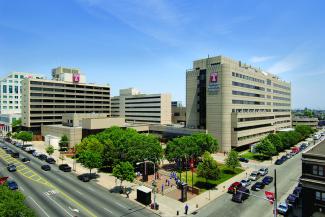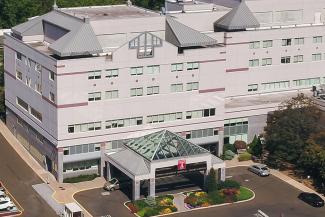During cataract surgery, an ophthalmologist removes the cloudy lens of the eye and replaces it with a clear artificial lens.
A cataract occurs when the lens in the eye becomes cloudy. Cataracts typically form slowly over time, and they can occur in one or both eyes. They disrupt vision in the center of the eye by interfering with the lens’ ability to focus light on the retina.
The procedure to remove cataracts usually takes less than 30 minutes and is performed on an outpatient basis. If cataracts are present in both eyes, they are typically treated four to eight weeks apart.
Prior to surgery, patients receive numbing eye drops and a sedative. The surgeon then makes a small incision in the eye and removes the cataract via phacoemulsification. To perform this surgery, the surgeon uses an instrument that emits ultrasonic waves to break down the lens into a liquid. The emulsified lens is then suctioned from the eye.
Once the cloudy lens has been removed, the surgeon implants an intraocular lens (IOL) into the space previously occupied by the cataract. IOLs are clear artificial lenses made of silicone, plastic or acrylic. Some IOLs have special features, such as the ability to provide bifocal vision or correct astigmatism. A Temple ophthalmologist can determine which IOL is right for each patient.
After surgery, many patients may experience some temporary blurriness in their vision. Itchiness and mild discomfort are normal. As the eye heals over the next week, vision will improve. Patients often report significant visual improvement, though many still rely on glasses or contacts at least some of the time.
In some cases, visual cloudiness can return even after cataract surgery. This happens when the remaining portion of the lens capsule surrounding the lens gets cloudy. This happens after about 10% of surgeries. Temple offers a quick and painless laser treatment called capsulotomy to remove the cloudiness and restore vision.
Why Temple Health?
Temple ophthalmologists specialize in the medical and surgical management of eye disorders — from the most routine to the most complex. Our understanding of the complicated problems associated with cataracts helps patients receive appropriate treatment.
Ready for an Appointment?
Find a doctor near you, request an appointment, or call 800-TEMPLE-MED (800-836-7536) today.


